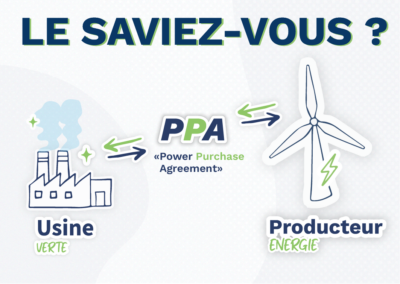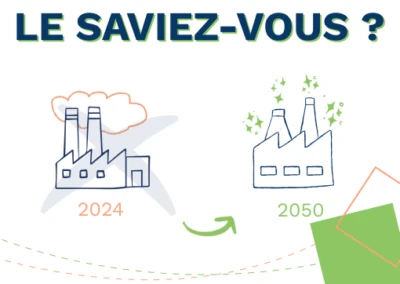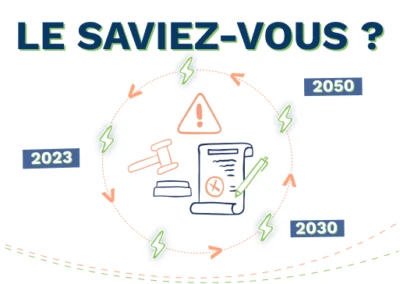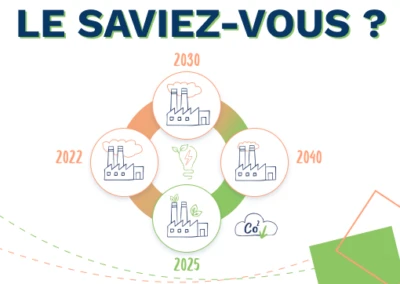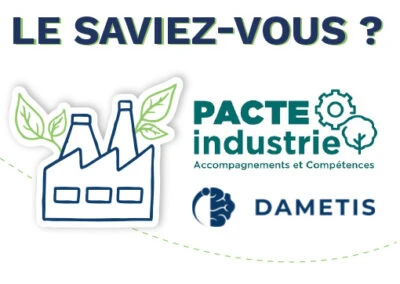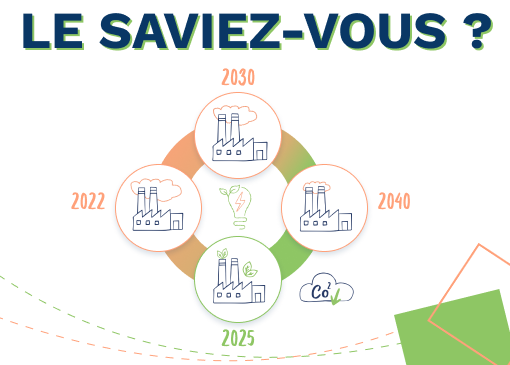
Décret tertiaire, obligations de réduction de la consommation énergétique et solutions
What is the tertiary decree?
For a few years now, France has made it a point of honor to limit global warming, and this notably involves accelerating the energy transition of businesses. Implemented in 2019 as part of the ELAN law, the Tertiary Decree is also known as the Tertiary Eco-Energy Device (DEET).
As a reminder, the Elan law (Evolution of Housing, Development, and Digital) enacted in 2018 aims to address the numerous housing demands, simplify housing-related standards, and promote social housing.
The tertiary decree is a regulatory text, stemming from Article 175 of this law. It focuses on the energy performance of buildings and specifies that the tertiary sector must reduce its energy consumption. Within this framework, the tertiary decree imposes a significant reduction in energy consumption by tertiary buildings by 2050.
Which infrastructures are covered by the tertiary decree?
Every owner or tenant of buildings, parts of buildings, or a group of buildings hosting a tertiary activity with a surface area equal to or greater than 1000m² is subject to the tertiary decree. Therefore, if a building is of mixed use, only the part housing a tertiary activity is affected. In the case of a group of buildings located on the same site or the same land unit*, it is necessary to combine the surfaces on which a tertiary activity is carried out to determine whether the building is subject to the tertiary decree or not.
Under the tertiary decree, owners will have to take action on the building and on their activity if they carry it out themselves. Conversely, tenants will only be able to act on their activity.
This tertiary decree thus applies to many buildings, whether in the private or public sector. The buildings concerned are as follows:
- Offices
- Hotels
- Shops
- Educational buildings
- Administrative buildings
- Logistics
- Healthcare
- Sports facilities
Thus, industrial companies may be affected by the tertiary decree if they have:
- A company restaurant
- Administrative offices or an office area (HR, Sales, etc.)
- A showroom
- A storage space
Specificity of storage space in the tertiary decree
Among the storage spaces, is not subject to:
- The storage space for raw materials, or silo, storing unfinished bulk products, included in the industrial process
- The storage space for finished products, prior to shipment only and within the framework of just-in-time flows, with the products not staying more than 5 days
Storage spaces subject to compliance with the tertiary decree:
- The storage space for finished products in cases where the industrialist does not operate under just-in-time flows and where finished products are stored for more than 5 days
What are the obligations to be respected?
In the context of achieving the objective using the relative value method: The State has established different “levels” that take place every decade until the final objective defined in 2050. The levels set by the tertiary decree, which must be respected by the owners or tenants of a building hosting tertiary activities, are as follows:
– Reduction of the building’s final energy consumption by 40% by 2030
– Reduction of the building’s final energy consumption by 50% by 2040
– Reduction of the building’s final energy consumption by 60% by 2050
This energy reduction must be compared to a reference year chosen between 2010 and 2019, provided by the subject themselves.
Choosing this relative value method can be beneficial in the case of tertiary activities carried out in an old, rather energy-intensive building.
As part of achieving the objective with the absolute value method: The objectives to be achieved will then be set according to the building category, geographical area, altitude. In relation to these elements, the thresholds will be different from those of the relative value because they will depend on two components:
- HVAC = Heating, Ventilation, Air Conditioning
- SEU = Specific Energy Use
This absolute value method, within the scope of the tertiary decree, is to be favored as soon as the liable party owns a recent, low-energy-consuming building.
In some cases, these levels can be adjusted, especially when faced with technical constraints, when the situation does not allow these high objectives to be met: building too old, new activity, etc. In this situation, it is necessary to prepare a technical file which will subsequently be sent to the OPERAT platform.
How to fill in data related to the tertiary decree?
- Description of the tertiary activity carried out
- Floor area of the buildings carrying out this activity
- Reference year, mandatory regardless of the chosen method (the reference year had to be provided in September 2022)
- Annual energy consumption data of the building
- Any adjustments to the objectives
Since 2022, those concerned must now transmit on the OPERAT platform, the final energy consumption of the previous year of their building, each year before September 30th.
Given that the tertiary decree is a very vast and complex topic, the OPERAT platform also has an FAQ tab that provides answers to more in-depth questions.
How to meet the requirements of the tertiary decree?
To avoid any sanctions, subjects must proceed methodically, here are the steps to follow in order to reduce their energy consumption:
Step 1: Precisely identify the premises subject to the tertiary decree
Step 2: Analyze the most energy-intensive points of your buildings
Step 3: Implement an action plan to reduce your consumption and achieve the objectives set by the tertiary decree
To meet the obligations of the tertiary decree, it is possible to use external service providers who can help you reduce your energy consumption and enter data on the OPERAT platform
What are the applicable sanctions in case of non-compliance with obligations?
Under the tertiary decree, the liable party is required to:
- Declare its data every year before September 30th on the OPERAT platform
- Comply with the set objectives of the tertiary decree
Failure to meet either of these two obligations may result in various sanctions.
In the case of unjustified non-declaration of data on the OPERAT platform:
The competent prefect for the building and the tertiary activity carried out may formally request the liable party to provide the missing information within a three-month period.
In the event of non-compliance with the objectives set by the tertiary decree:
The prefect may formally request the liable party to submit an action plan within a six-month period to comply with the set objectives. If after these 6 months, no progress is visible, the prefect may issue an individual formal notice to the owner or tenant. They will then be required to submit their action plan within a three-month period, which must comply with their respective obligations.
Following the last formal notice and if the liable party has not provided the prefect with their action plan, the prefect may impose a financial penalty of up to €1500 for an individual and up to €7500 for a legal entity.
It should be noted that in France, a document published online tracks formal notices that have remained ineffective. Thus, formal notices can have serious consequences on the company’s image and reputation, and consequently on its operations.









